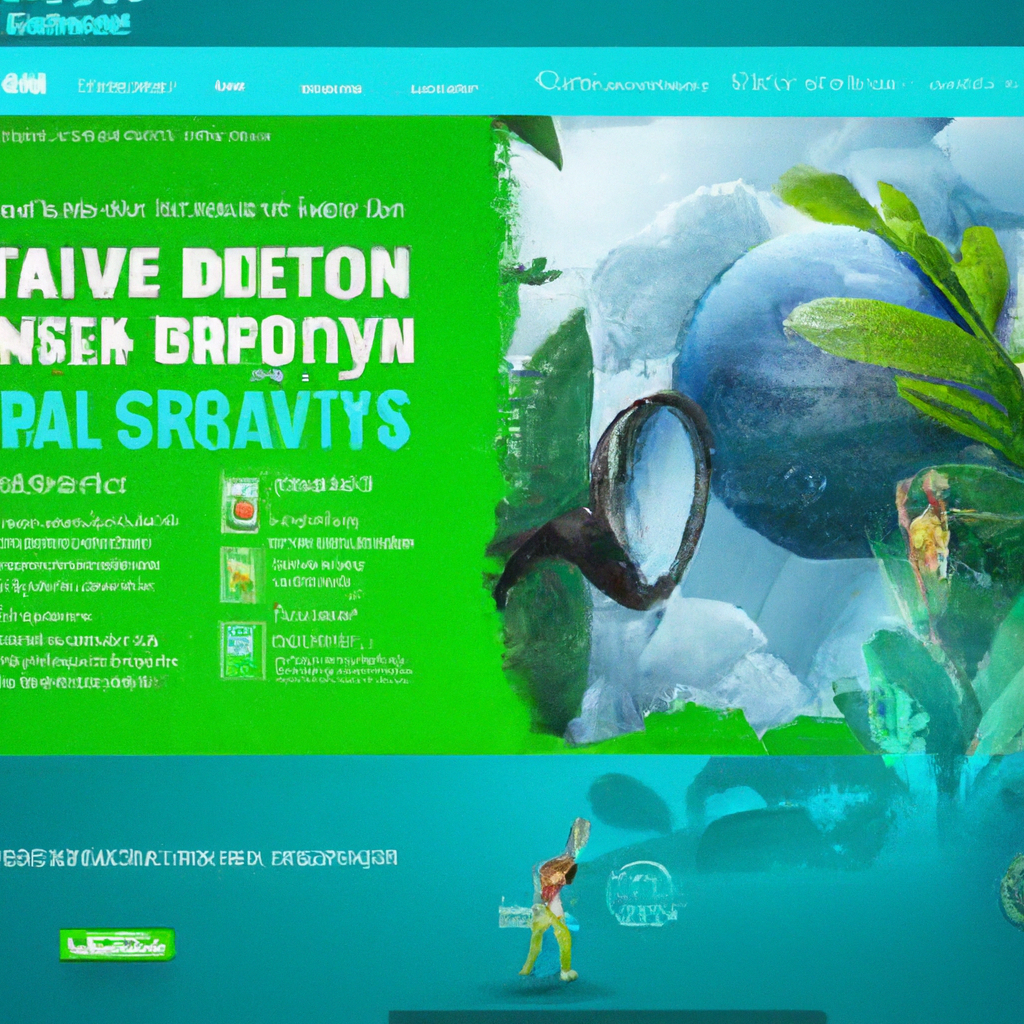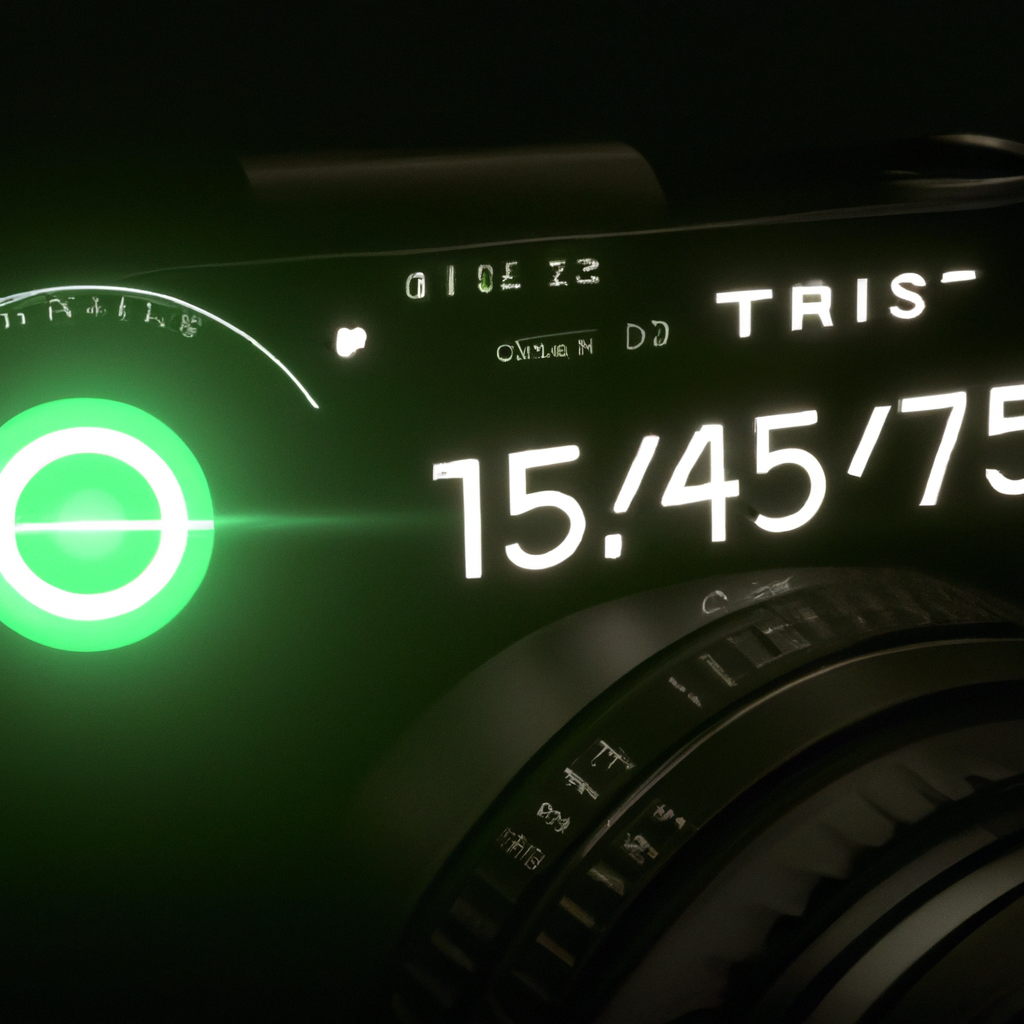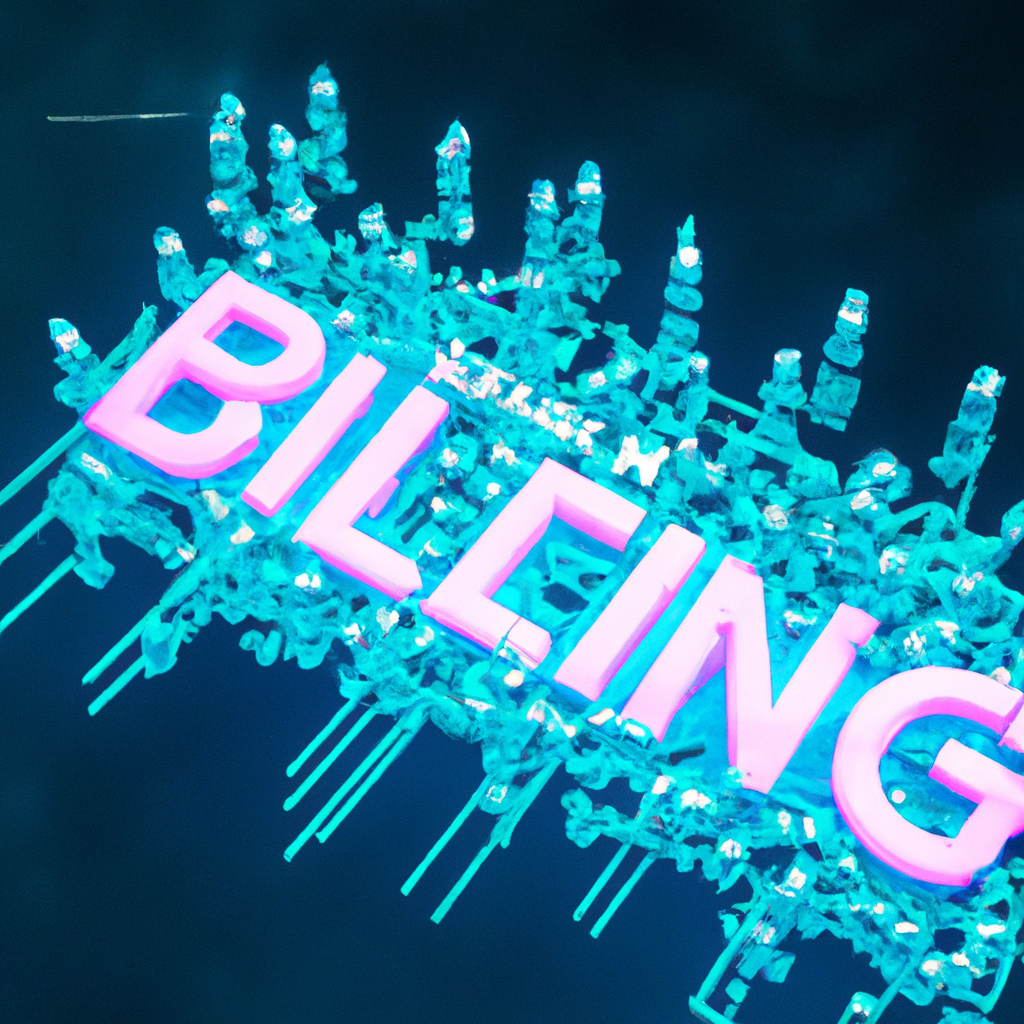What is Anchor Text
Key Takeaways:
- Anchor text is the visible, clickable text in a hyperlink that directs users to a different page or website. Understanding anchor text is crucial for effective SEO, as search engines use it to determine a web page’s topic and relevance.
- SEO best practices for anchor text include using descriptive and relevant text, avoiding overuse of exact match anchor text, and diversifying anchor text with different relevant keywords or phrases. However, it’s important to strike a balance between optimizing for search engines and providing a positive user experience.
- The types of anchor text include branded, exact match, partial match, generic, naked URL, image, branded + keyword, and long-tail anchor text. Each serves a different purpose and should be used strategically based on the context of the link and the web page it points to.
Introduction to Anchor Text
Anchor text is the backbone of search engine optimization, and understanding it is crucial for any online business. In this section, we’ll explore the definition and importance of anchor text, backed by cited sources.
Definition of Anchor Text
Anchor text, also called link text, link label or link title, is the words or phrases that you click on in a hyperlink. They direct users to another webpage. Search engines use anchor text to understand the relevancy of linked pages.
Using anchor text correctly can improve how a website looks on search engine result pages (SERPs). It’s an HTML element. Context and relevance is provided to both users and search engines, as anchor text signals classify webpages.
Search algorithms analyse links between source page and destination page. Thus, anchor text helps search engines understand what websites are about. This has an effect on SEO strategy and how websites are ranked.
In brief, anchor text can boost SEO rankings. Knowing the definition of anchor text, its importance in creating effective hyperlinks and how it helps SERPs will help you get the most out of your website.
Importance of Anchor Text for SEO
The importance of anchor text for SEO can’t be overstated. In this section, we’ll take a closer look at how the correct use of anchor text can significantly impact a webpage’s search engine optimization. By exploring SEO best practices for anchor text and the signals used by search engines to determine a webpage’s topic, we’ll understand how to use anchor text to boost our website’s visibility and ranking.
SEO Best Practices for Anchor Text
SEO pros must adhere to the best practices for anchor text to optimize a website for search engines. Search engines look to the anchor text of links to determine the content’s relevance. Using relevant and descriptive keywords or phrases is beneficial to a website’s search visibility and rankings. But, do not overuse exact or partial match keywords – this could appear spammy.
Vary anchor text with different relevant keywords or phrases. This helps to avoid over-optimization penalties. A good choice is to use branded and long-tail anchors with specific keyword phrases.
Optimizing anchor text means selecting relevant and descriptive keywords for internal and external links that match up with the website’s content and topic. Following SEO best practices for anchor text can help websites get better search engine rankings and organic traffic.
Anchor text conveying descriptive terms for internal links is important to show users what to expect when they click through. Brand and relevant keyword anchors also help establish the brand’s relevance for visitors.
Signals Used by Search Engines to Determine a Web Page’s Topic
Search engines use many signals to figure out a webpage’s content and relevance to a person’s search. Anchor text is an essential signal. It’s the clickable text in a link. It provides context to help search engine crawlers understand the linked page and how it relates to the linking page.
The algorithms look at anchor text to find out a website’s authority and quality for a keyword or phrase. These signals are important for search engines to know what’s on a webpage.
Anchor text signals play a big role in PageRank and Hummingbird algorithm. If the signals match with other ranking factors like backlinks and social shares, websites will be more visible in search result pages (SERPs).
Don’t use too many exact match keywords in anchor text since this is black-hat optimization and may lead to penalties from Google. A study suggests people use partial match and long-tail variations more.
Anchor texts are a great way to rank higher on Google. Optimize them with tools like Yoast SEO Premium or SEMrush Site Audit Tools. Pick wisely from the types of anchor text – branded, long-tail – for optimal SEO performance.
Types of Anchor Text
Anchor text is a crucial element in SEO that helps search engines understand the context and relevance of a link. In this section, we’ll discuss the different types of anchor text that can be used to link to a website, including:
- Branded anchor text – uses the brand name as the clickable text.
- Exact match anchor text – uses the exact keyword or phrase being targeted as the clickable text.
- Partial match anchor text – uses a variation of the exact keyword or phrase as the clickable text.
- Generic anchor text – uses generic words like “click here” or “read more” as the clickable text.
- Naked URL anchor text – uses the full URL as the clickable text.
- Image anchor text – uses an image with an alt tag as the clickable text.
- Branded + keyword anchor text – uses a combination of the brand name and keyword as the clickable text.
- Long-tail anchor text – uses a longer phrase or sentence as the clickable text.
Let’s explore each type in detail and understand their significance in optimizing a website’s search engine ranking.
Branded Anchor Text
Branded anchor text is essential for improving a website’s overall SEO ranking and for gaining brand recognition. Utilizing the brand’s name as the hyperlink text strengthens the website’s association with the brand, building user trust and credibility.
Using branded anchor text has many advantages; it stops overusing specific keywords or phrases, which search engines may penalize. This type of anchor text is especially beneficial for websites wishing to grow their reputation and attract more users.
In addition to boosting SEO, branded anchor text also elevates click-through rates due to its link to a particular brand. Making sure the anchors are relevant and accurately describe the linked content, while using the company’s name or logo, is key for successful branded anchor text.
Using exact match anchor text, where the same keyword is used repeatedly in the anchor text, can hurt a website’s reputation with search engines. Therefore, using branded anchor text is a better method of achieving SEO goals while boosting brand recognition and trust.
Exact Match Anchor Text
Exact match anchor text is a popular SEO technique. It’s when you use the exact word or phrase of a keyword in a link from one webpage to another. This can improve search engine rankings. However, too much of it can trigger penalties from Google’s algorithm. Marketers and website owners must find the right balance between using enough anchor text and avoiding penalties. Comprehending this balance can lead to website optimization and progress.
Partial Match Anchor Text
Partial Match Anchor Text is a great way to improve user experience. Descriptive links help users find their desired content easier. It also has benefits for SEO. By using varied keywords and phrases, webmasters create a diverse link profile that looks natural to search engines.
Using too much Partial Match Anchor Text can lead to penalties from search engines. A combination of different types of anchor text, such as branded and generic, is best. Exact match anchor text should be avoided as it can be seen as manipulative. Google’s Penguin algorithm tried to stop this type of behaviour.
Partial Match Anchor Text adds relevance between the linking page and destination page. This can increase visibility of a website. Unleash your creativity with generic options and use Partial Match Anchor Text to improve user experience and SEO efforts.
Generic Anchor Text
Generic anchor text is a type of link description which isn’t branded, exact, partial or long-tail. It usually has non-descriptive words like “click here” or “read more”, with no info about the linked page. It can be tempting to use generic anchor text for links, but this can harm user experience and SEO efforts.
Using generic anchor text stops search engines from getting context on the linked page’s content. This could lead to users bouncing back, feeling misled by the description. Website owners must optimize links with relevant keywords or phrases, that describe the content.
For better SEO and user experience, website owners should use different relevant keywords or phrases, instead of just one. This helps search engines understand what the page is about, and gives users options based on their interests.
Generic anchor text can be OK for navigation within a website menu. But website owners should try to avoid using it, to improve SEO and user experience. Sometimes, the best way is to go bare – with Naked URL Anchor Text.
Naked URL Anchor Text
When it comes to Anchor Text, Naked URL Anchor Text means a hyperlink with the raw webpage URL as the clickable text. No keywords or phrases are used.
This type of Anchor Text is often used when the link itself is already clear or includes a relevant keyword in the URL.
Naked URL Anchor Text has advantages, as it can be useful when adding extra keywords is not needed. But, this should be done sparingly and only when suitable. Because, users and search engines don’t know where the link leads.
It’s important to blend Naked URL Anchor Text with other types of Anchor Text that use keywords and phrases. This way, search engines can understand what the linked page is about.
Pages need descriptive content, both for people who read it and for search engines to index its relevance. Though Naked URLs are short, they lack context and don’t give much information about the destination webpage.
Image Anchor Text
Using image anchor text can provide extra context and data about what’s on a web page. Search engines can use this type of anchor text to comprehend the page linked to better. It’s imperative to make sure the alt text for the image is pertinent and descriptive. This impacts both user experience and SEO.
Optimizing image anchor text involves selecting related keywords for the alt tag. Also, take into account the context and relevance of the content near it. Furthermore, using proper file names for images can help with SEO.
One example of successful use of image anchor text was when a company created a good infographic. They used relevant keywords in both the alt tag and the file name. This caused more visibility and organic traffic from search engines.
Branded + Keyword Anchor Text
Branded + Keyword Anchor Text is a powerful technique. It combines the brand name with a keyword or phrase related to the content. This helps search engines understand the linked page, thus improving visibility in results.
Using it promotes the brand while providing info to readers. It shows search engines the website owner is trying to boost their brand’s visibility. It also establishes the brand as an authority in the field.
It must be used carefully, not overused. Else, it may look like manipulation, leading to penalties or ranking loss. Use it naturally in content that provides value to users searching for relevant info.
Combined with other types of anchor text, this strategy is effective in making optimization efforts appear authentic. Use Branded + Keyword Anchor Text to provide value to readers while boosting brand visibility in search results.
Long-Tail Anchor Text
Long-Tail Anchor Text is a type of keyword phrase that is longer and more specific. It gives the user a clear destination and implies that the content is relevant to their search. This type of anchor text can boost SEO.
It has many benefits, like improved organic search rankings, conversion rate optimization, and low bounce rates. It can draw in lots of website visitors from multiple sources.
Long-tail anchor texts have a lower competition rate than shorter anchor texts – they are more specific and targeted at certain audiences. This means website owners can outrank their competitors with descriptive language or phrases.
The idea of long-tail keywords goes back years. Chris Anderson coined the term in his book ‘The Long Tail.’ Long-tail anchors became popular due to search patterns for specific items or services. It is key for website owners and marketers who want their products noticed in the digital world.
Optimizing Anchor Text for Better Rankings
Anchor text is a crucial element for optimizing SEO rankings. In this section, we will explore different strategies for optimizing anchor text to improve website rankings. We’ll take a closer look at various methods for keyword research for anchor text, and ways to diversify anchor text with different relevant keywords or phrases. By implementing these tactics, you can improve your website’s visibility and gain a competitive edge in search rankings.
Types of Keyword Research for Anchor Text
Keyword research for optimizing anchor text is essential for any successful SEO strategy. The anchor text should be relevant to the linked page’s content.
Semantic Analysis Research examines related words and phrases that link to the website or content. This helps form different types of anchor text.
Competitor Analysis Research looks at what keywords competitors use and how they use them. This helps to create an effective SEO strategy.
Trending Topic Research should be done regularly. Trends affect online search behavior. Incorporating trending topics into anchor text can improve SEO.
Diversity is key when researching keyword for anchor text optimization. A mix of branded, generic, partial match, and long-tail anchors will help rankings and avoid a spammy effect.
Long-tail keywords are often used in searches. These keywords enhance click-through rates and improve search rankings. So, include a range of relevant keywords and phrases for maximum SEO impact.
Diversifying Anchor Text with Different Relevant Keywords or Phrases
It’s vital to optimize anchor text in the SEO world to boost visibility in search engine results. To stop penalties for over-optimization, diversify anchor text with relevant keywords or phrases. Doing this informs search engines that the linked page covers a variety of topics and is more likely to appear in relevant search results.
To diversify anchor text, use semantic variations of target keywords or phrases. Instead of only using “best coffee shops,” think of related terms, like “top cafes,” “great coffee spots,” or “popular java joints.” Adding these variations to link the same page tells search engines that the destination page covers a range of coffee shop-related topics.
Focus on natural language when using anchor text. This makes it sound like something a person might naturally say when linking to a page and improves user experience, while avoiding penalties from search engines.
Research shows diversifying anchor text with relevant keywords can increase organic traffic and improve rankings. According to Moz’s Anchor Text Best Practices guide, sites with diversified anchors have 30% higher rankings than those with only exact match anchors. Therefore, diversify anchor text with different relevant keywords or phrases and use natural language to improve website visibility in search engine results.
Anchor Text and User Experience
Anchor text can make or break the user experience of a webpage. In this section, we’ll explore how anchor text can enhance user experience by encouraging visitors to engage with the content they’re interested in. We’ll discuss the importance of relevant, descriptive anchor text and how it can guide users seamlessly through a website. Additionally, we’ll examine the ways in which anchor text can be used to improve the overall usability and accessibility of a webpage.
Importance of Relevant, Descriptive Anchor Text
Anchor text is essential for Search Engine Optimization (SEO). It helps search engines understand the context of a webpage’s content. Descriptive anchor text enhances visibility on Search Engine Results Pages (SERPs) and guides users to the desired information. It also establishes website authority in an industry or niche, which is great for brand identity.
Long-tail anchor texts increase the popularity of specific keywords, making the webpage more visible for searches. It’s important to diversify with different relevant keywords or phrases to avoid over-optimization.
Overall, relevant and descriptive anchor texts are key to improving webpage rankings and traffic through SEO. Quality anchor texts position websites as authoritative sources, which benefits user experience on SERPs.
Enhancing User Experience through Anchor Text
Anchor text is key for improving user experience on a website. It is essential for informing users about where a link takes them and what kind of info they can expect to find.
Anchor text helps users by giving relevant, descriptive information. This allows them to decide whether or not to click the link. It also makes it easier for users to navigate the webpage.
It is important to use plain language in anchor text. People may not know technical words or industry terms. So, using simple language helps ensure that users understand where the link takes them. Businesses must do comprehensive keyword research and choose phrases that their target audience knows.
By following these best practices, businesses can significantly enhance user experience on their site and increase traffic flow. In the end, anchor text can hugely affect the success of a website.
Anchor Text and Search Engine Reflection
Anchor text is a powerful tool that search engines use to understand the content of a link’s destination, and it can also be used as a reflection of how other people view a webpage. In this section, we’ll explore how search engines use anchor text to evaluate the content and reputation of a page. We’ll also examine how external anchor text can give us insight into how others perceive a page’s value and relevance.
Search Engine Use of Anchor Text to Understand the Content of a Link’s Destination
Search engines use anchor text to identify the content of a page linked by a hyperlink. It serves as a label for the linked page, and helps search engines rank it. By looking at anchor text, search engines can understand the topic of the linked page. If descriptive anchor text leads to the same page, it shows the page has valuable info about the topic.
This helps search engines give users more accurate results. They examine external factors like anchor text and links from reliable websites, to see what public thinks about a page. Links from high quality sources and descriptive anchor texts can improve a page’s organic rankings, according to Moz Learn Anchor Text.
In conclusion, search engines rely on anchor text to understand a webpage and its relation to a particular topic.
Using External Anchor Text as a Reflection of How Other People View a Page
External anchor text is key for search engines to figure out the page a link leads to. It acts as a mirror of how others view a page, helping search engines to show relevant and trustworthy results to users. Having good quality external anchor text is very important to build trust and authority for your website. This is since search engine crawlers can detect if the external links pointing to your web page are coming from reliable sources or not, based on the relevance of the anchor text.
High-quality external anchor text signals to search engines that your content is valuable. This can lead to better rankings and more visibility. So, choosing the correct anchor text important; it should reflect the message you want to pass through your website. The best practice is to keep the content related to the page’s content. This will help search engines understand what users can expect when they click on the link.
Research has shown that external anchor texts have a great effect on SEO rankings, along with backlinks and social shares. This is why it is essential to include using external anchor text as a reflection of how other people view a page in your website’s SEO strategy.
Tools and Resources for Optimizing Anchor Text
When it comes to optimizing anchor text, having the right tools and resources can make all the difference. In this section, we’ll explore several options that can help you get the most out of your anchor text strategy. From Yoast SEO Premium and Yoast SEO for Shopify to the SEMrush Site Audit Tool and Moz Learn: Anchor Text, we’ll discuss how these tools can provide valuable insights and analysis to help you optimize your anchor text for maximum impact.
Yoast SEO Premium and Yoast SEO for Shopify
Want top-notch SEO optimization? Yoast SEO’s got you! They have a Premium version and Shopify-specific services to help boost website visibility & ranking. With Yoast SEO Premium, you’ll get all of their features – like hundreds of site capacity, instant insights, & social previews. For Shopify users, Yoast SEO for Shopify may be right for you, though some features may not be accessible. Either way, you’ll get social previews. Why not try Yoast SEO & see how your website performance improves?
SEMrush Site Audit Tool
The SEMrush Site Audit Tool is a powerful resource for users wanting to conduct a comprehensive SEO audit of their websites. It identifies errors or issues related to crawling, indexing, and ranking. Reports with suggestions on how to fix any errors are provided. It also offers insights into competitors’ websites. Analyzing their link profiles, keyword rankings, and backlink strategies helps you gain a better understanding of your competition. Plus, it monitors website traffic trends over time.
One unique feature of the SEMrush Site Audit Tool is providing users with comprehensive statistics about their website’s overall health. This includes page load speed, HTML structure quality, internal linking, and broken links.
To optimize anchor text using the SEMrush Site Audit Tool, you can identify issues related to broken links or unoptimized anchor texts. Then, prioritize fixing them by understanding which ones are impacting your site’s rankings most severely. The tool can also be used to find new link-building opportunities. The report generated can be customized to your needs.
Overall, the SEMrush Site Audit Tool is an essential resource for businesses looking to improve their online visibility through technical SEO optimization. With its unique features, it’s an indispensable tool for digital marketing professionals. Get ready to be schooled by Moz Learn with the help of SEMrush Site Audit Tool.
Moz Learn: Anchor Text
Anchor Text is a super important part of SEO. It is what appears as blue, underlined text, and when you click it, it takes you to another web page. Knowing how to use Anchor Text is very necessary for improving website rankings.
When it comes to SEO, Anchor Text is key. It helps search engines to understand what the webpage is about. Optimized Anchor Text also helps users, so they know what type of content is on the linked page before clicking. This improves the user experience and increases rankings.
There are different types of Anchor Text that you can use. This includes Branded, Exact Match, Partial Match, Generic, Naked URL, Image, Branded + Keyword, and Long-Tail Anchor Text. Each serves a different purpose and has a different impact on SEO.
You can research keywords for Anchor Text optimization in many ways. These include looking at competitors’ strategies, using Google autocomplete, and using tools like Ahrefs or SEMrush.
Optimizing Anchor Text improves not just search engine rankings, but also the user experience. It helps to provide descriptive links that match their interests. It also works like an endorsement from other sources, which confirms the credibility of the content.
Yoast SEO Premium/Yoast SEO for Shopify and SEMrush Site Audit Tool can help improve Anchor Text optimization. Moz Learn: Anchor Text also offers more tactics to explore, like link building strategies and efficient anchor text approaches. This can help improve link equity transfer and search engine insight.
Conclusion: Maximizing the Potential of Anchor Text for SEO
Anchor text is key for SEO. It has a big effect on the search engine rankings of linked pages. Website owners must use appropriate and descriptive anchor text to make the most of anchor text for SEO.
To take advantage of anchor text, website owners should use natural-sounding anchor text that explains the linked page’s content. Stuffing keywords must be avoided since it may lead to penalties from search engines.
Another helpful strategy is internal linking. This means linking to related pages within the website. It makes the website better organized and easier to understand for users and search engines.
In summary, using good anchor text and internal linking can maximize the potential of anchor text for SEO. This leads to higher search engine rankings and better website optimization.
Five Facts About Anchor Text:
- ✅ Anchor text is the clickable text in a hyperlink. (Sources: WordStream, Yoast, SEMrush, Moz)
- ✅ Relevant anchor text improves website rankings and enhances user experience. (Sources: WordStream, Yoast, SEMrush, Moz)
- ✅ Keywords in anchor text are signals used by search engines to determine a web page’s topic. (Source: WordStream)
- ✅ Anchor text variation is necessary to avoid triggering Google’s spam filter. (Source: Yoast)
- ✅ Types of anchor text include exact-match, partial-match, branded, naked link, and generic. (Source: Moz)
FAQs about What Is Anchor Text
What is anchor text?
Anchor text is the visible, clickable text in a hyperlink that indicates the linked page’s content.
How is anchor text used in backlinks?
Anchor text is used in backlinks to provide context for the page being linked to and to signal to search engines what the linked page is about.
Why is it important to use relevant link texts?
Using relevant link texts helps search engines understand the context of your page and can improve your website’s search engine rankings.
What are the different types of anchor text?
The different types of anchor text include branded, exact match, partial match, generic, naked URL, image, branded + keyword, and long-tail.
What are the SEO best practices for anchor text?
The SEO best practices for anchor text include using relevant keywords, avoiding keyword stuffing, diversifying with different relevant keywords or phrases, and keeping anchor text succinct and relevant to the targeted page.
How can Yoast SEO and Yoast SEO Premium help with anchor text optimization?
Yoast SEO and Yoast SEO Premium provide tools to optimize anchor text, including the ability to focus on a target keyphrase, access to free training courses, and a site audit tool that reports on missing or non-descriptive anchor text.







